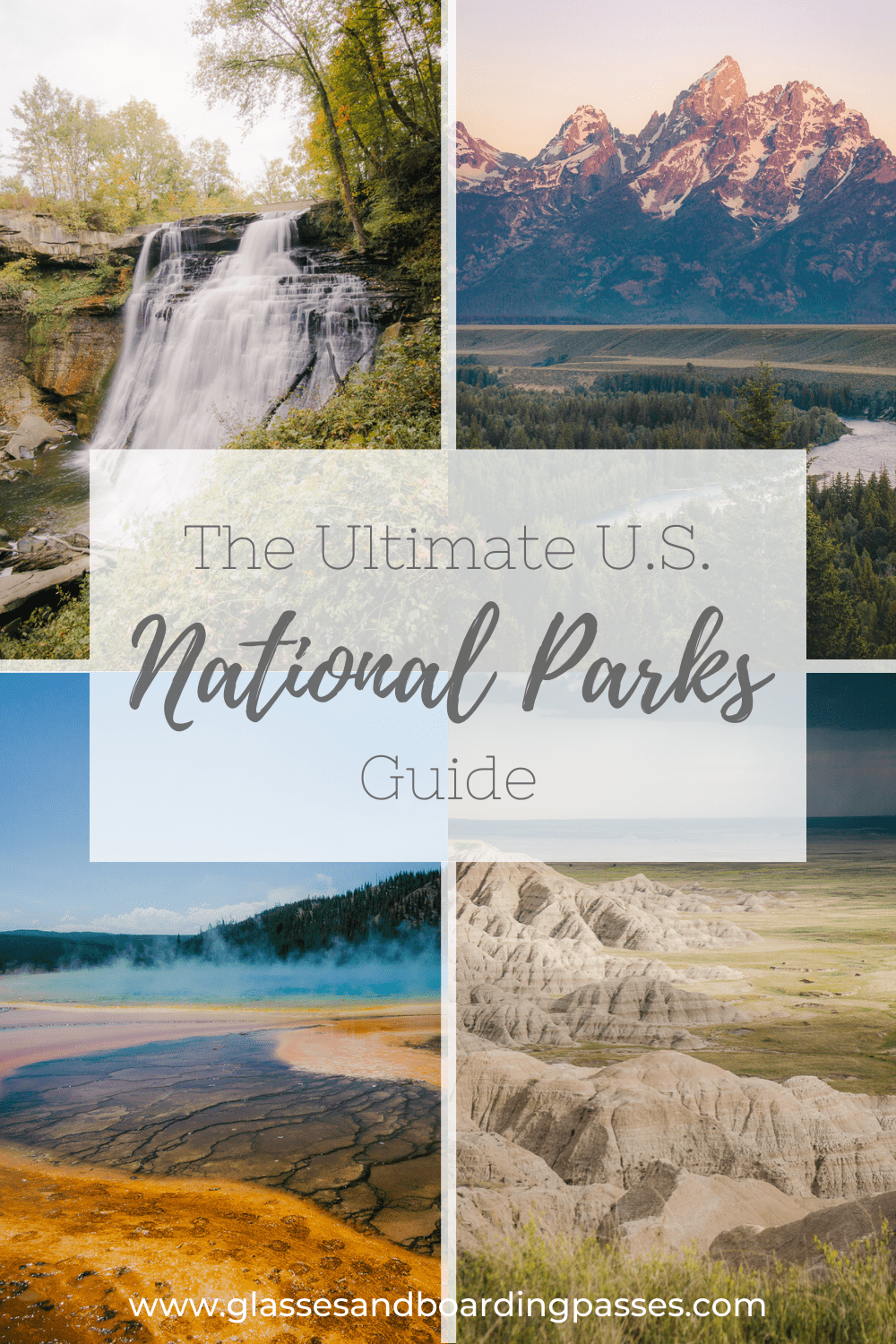
The United States is one of the most gorgeous, diverse nations in the world – and nothing highlights this more than our national parks. Currently, there are 62 parks in the U.S. covering over 52 million acres of land. That’s a lot of nature to explore!
It’s on my bucket list to visit them all – and document my experiences for you! This post will be your one-stop shop for all my best national parks resources, so you can easily plan your trips and get outside to enjoy the best that the U.S. has to offer. I’ll update this post as I visit more parks, so make sure to check back often!
Without further ado, here’s my ultimate U.S. national parks guide!
Table of Contents
Badlands National Park
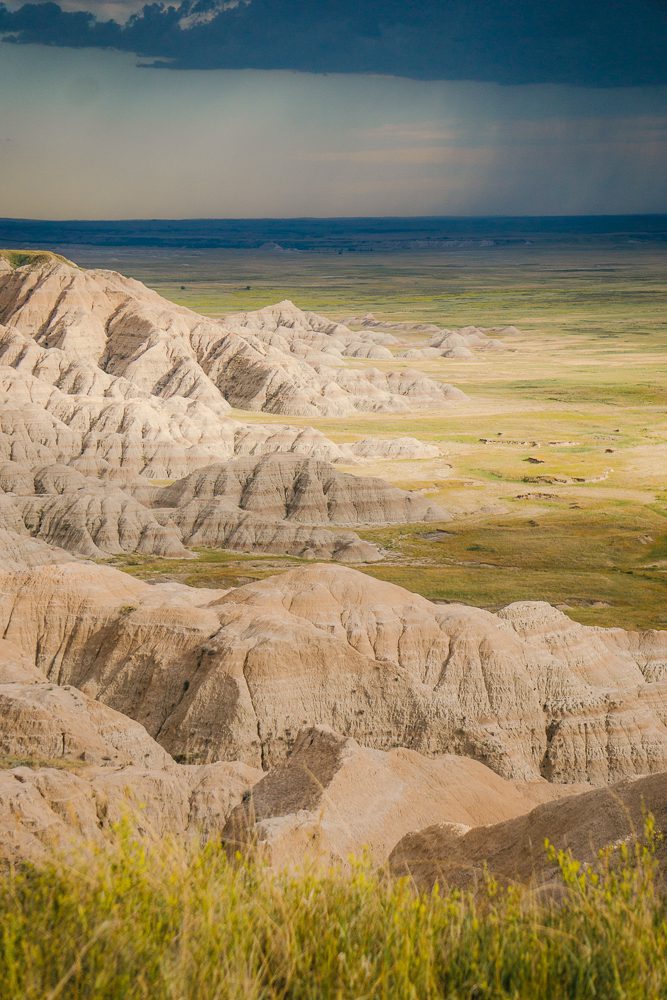
Location: Southwestern South Dakota, USA
About the park: Badlands National Park is famous for its jagged rock formations (called buttes and pinnacles) as well as its prairies. In fact, it’s home to the largest undisturbed mixed grass prairie in the country! The stark contrast between the prairies and the rocks is one of the reasons I love the Badlands, and you can easily experience both of these terrains during your visit to the park.
Entrance fee: $30 for one week, or included in the annual national parks pass
Top three things to do:
- Take advantage of the park’s open hike policy, which allows visitors to hike off established trails (as long as they believe they can remain safe doing so). This gives you the ultimate freedom to explore the remoteness of the park.
- Visit Prairie Dog Town, the home to hundreds of wild prairie dogs! You’ll likely encounter other wildlife on your way, including bison and bighorn sheep!
- Watch the sunset from Pinnacles Overlook. The fading golden light stretches the shadows of the rock formations, making them even more majestic than during the daytime.
Read more: The Best Hikes in Badlands National Park
Cuyahoga Valley National Park
Location: Northeastern Ohio, USA
About the park: Cuyahoga Valley National Park is a beautiful park filled with trails, waterfalls, wetlands, and even a scenic train ride. The park is a long, thin stretch of land following the Cuyahoga River, allowing a diverse array of plants and animals to inhabit the park. Cuyahoga Valley is unique in that it is just a short drive from densely populated urban areas like Cleveland and Akron. However, that doesn’t take away from the peaceful feeling once you’re inside the park and surrounded by nature.
Entrance fee: Free of charge
Top three things to do:
- Hike to Brandywine Falls, a gorgeous 60-foot waterfall in the heart of the park.
- Walk the boardwalk through Beaver Marsh to enjoy the beautiful wetlands filled with lilypads, beavers, and other wildlife.
- Take a scenic train ride through the park! This 2.5 hour ride weaves north and south through the park to highlight all the best parts of Cuyahoga Valley.
Read more: How to Spend One Day at Cuyahoga Valley National Park
Grand Teton National Park

Location: Northwestern Wyoming
About the park: Grand Teton National Park is one of the most beautiful places I have ever been. Named after the tallest mountain in the towering mountain range that lines the western edge of the park, these majestic mountains were one of the main reasons I wanted to visit! There’s no bad view of them anywhere in the park. These mountains and the surrounding forests filled with crisp pine air make Grand Teton one of the best outdoor destinations in the U.S.
Entrance fee: $35 for one week, or included in the annual national parks pass
Top three things to do:
- Wake up early and watch the sunrise at the Snake River Overlook. There’s nothing like watching the golden light of dawn as it lights up the tips of the mountaintops. It’s simply breathtaking.
- Hike one of the many trails surrounding Jenny Lake. There are multiple trails with varying lengths and levels of difficulty – something for everyone!
- Enjoy a picnic dinner at one of the many turnouts around the park and soak in the park’s amazing views.
Read more: The Best Hikes in Grand Teton National Park
Haleakala National Park
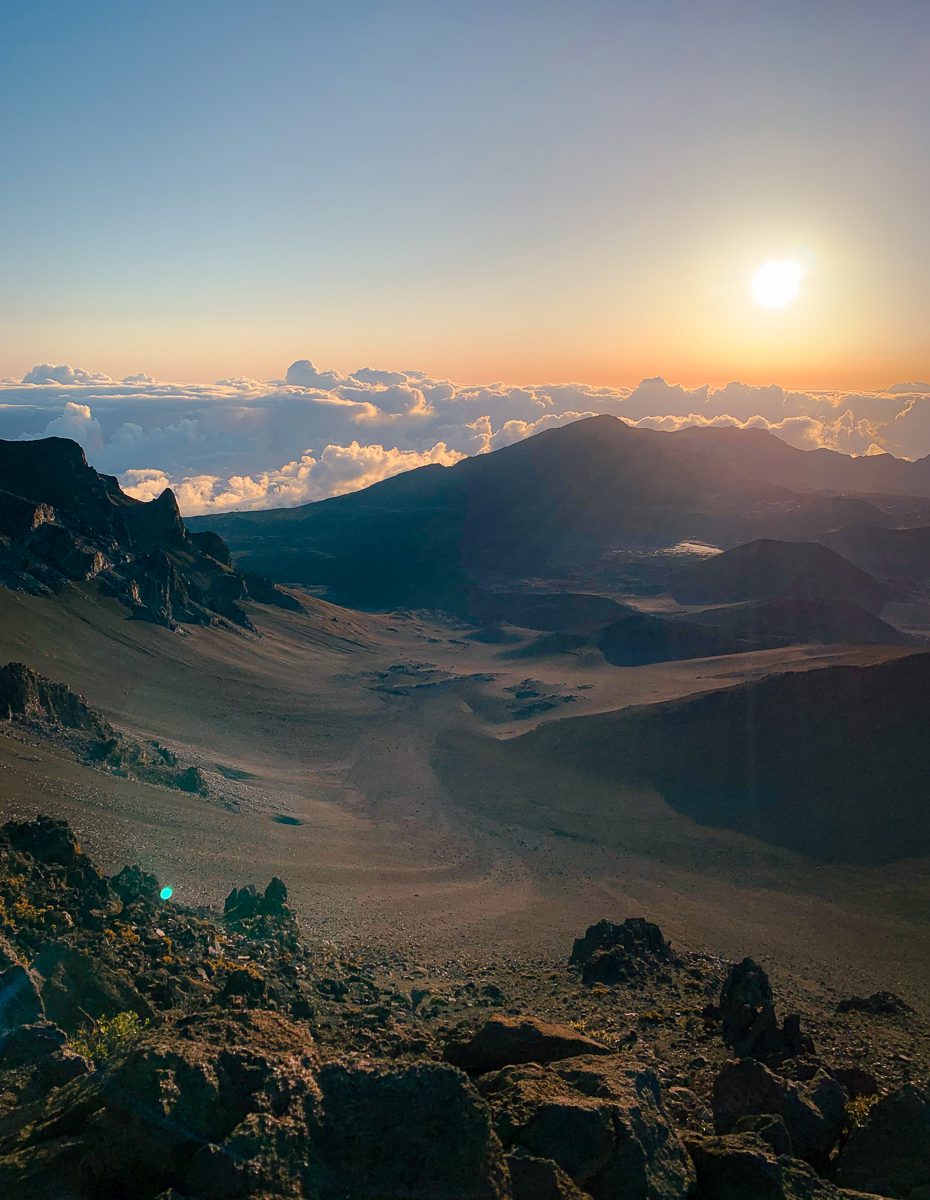
Location: Maui, USA
About the park: Haleakala National Park is named after the volcano that created the eastern side of the island of Maui. It’s incredibly diverse: at the summit, the conditions are rugged and desert-like, and on the eastern side, they’re lush and forested. Watching sunrise at the summit is a bucket-list experience that is sure to be one of the best sunrises you’ve ever seen. But given the diversity of the park, there’s so much more to see and explore! You can’t miss this park on a trip to Maui.
Entrance fee: $30 for three days, or included in the annual national parks pass
Top three things to do:
- Watch sunrise above the clouds at the volcano’s summit (10,000 feet!).
- Explore the desert-like terrain near the crater of Haleakala.
- Hike the lush Pipiwai trail past a giant banyan tree, through a bamboo forest, and ending at a 400 foot high waterfall.
Indiana Dunes National Park

Location: Northwestern Indiana, USA
About the park: Indiana Dunes National Park is located on the southern shores of Lake Michigan, just a short hour drive southeast of Chicago. As America’s newest National Park, Indiana Dunes may be smaller and less famous than other parks, but it is well renowned for its diversity – its biodiversity ranks as the fourth compared to the rest of the National Parks! The variety of terrains (beach, forest, marsh, prairies, and rivers) allows for a wide variety of flora and fauna to flourish.
Entrance fee: Between $3-$6, depending on where you visit and the time of year. Note: this fee is not waived if you have an annual national parks pass.
Top three things to do:
- Hike the dunes (try the Dune Succession Trail or Mount Baldy Trail). Hiking in the dunes is no joke, though – your calves will be burning in no time!
- Visit the Century of Progress homes, five unique and modern homes built for the 1933 Chicago World’s fair.
- Relax on the beach and enjoy the views of Chicago in the distance (if it’s a clear day!).
Read more: The Best Things to Do at Indiana Dunes National Park
Wind Cave National Park

Location: Southwestern South Dakota, USA
About the park: Wind Cave National Park is one of the most unique national parks in the U.S. because the majority of the park is underground! It’s also one of the longest and densest cave systems in the world. Above ground, it’s part of South Dakota’s beautiful Black Hills and filled with wildlife.
Entrance fee: Free of charge (although if you want to go in the caves, that ranges from $12-$30)
Top three things to do:
- Go down in the caves! (Be sure to check the park’s website before you go, as the caves were closed for elevator maintenance when I visited.)
- Visit the cave’s largest natural opening. It’s only a 10 minute walk from the visitor’s center, and is the size of a basketball. You can also feel the cave ‘breathe’ as wind blows in or out of the cave – hence the name, Wind Cave!
- Watch the wildlife! There are tons of bison roaming the park (they wandered right across the road in front of me). And, the surrounding Black Hills scenery is gorgeous!
Yellowstone National Park

Location: Northwestern Wyoming, southern Montana, and eastern Idaho, USA
About the park: Yellowstone National Park is one of America’s most popular national parks. In fact, it is widely believed to be the first national park in the world! This, combined with the out-of-this-world hot springs and geysers that litter the park, makes Yellowstone a must-see bucket list destination.
Entrance fee: $35 for one week, or included in the annual national parks pass
Top three things to do:
- Soak in the gorgeous colors of Grand Prismatic Hot Spring. With naturally occurring colors of bright blue, yellow, and orange, this giant hot spring will make you feel like you’re on another planet.
- See the geysers erupt at Geyser Hill, including the famous Old Faithful. While not the largest geyser in the park, it is one of the most predictable and frequent.
- Walk around the boardwalk of West Thumb Geyser Basin, which takes you past a variety of different hot springs just steps away from the shores of Yellowstone Lake.
Read more: How to Explore Yellowstone in One Day
Know Before You Go
In addition to the above park-specific tips, the below are items I keep in mind on any national parks trip I take!
Pack for the outdoors: If you’re planning to visit a national park, chances are you’ll be spending a lot of time outside. Make sure to pack plenty of water and snacks to keep your energy up! I also typically wear layers since the weather can change from warm to cool fairly quickly, especially at higher altitudes or while hiking. Speaking of which – I can’t stress the importance of hiking shoes enough! This pair has saved my feet from pain and blisters on trails high up in the Tetons to the shores of Michigan. Finally, be sure to bring sunscreen, sunglasses, bug spray, and bear spray to protect you on your outdoor adventures.
Stop at the visitor’s center: The first stop I make at any national park is at the visitor’s center! Here you can talk to park rangers about your plans at the park, get maps (which I recommend, as cell phone service is often spotty), and get your national parks passport stamped. The visitor’s center often includes some of the nicest facilities in the park, so I always take the opportunity to use the restroom and fill up my water bottles.
Consider purchasing an annual parks pass: If you’re planning on visiting more than one national park in one year, you can save money by purchasing an annual national parks pass, called the America the Beautiful Pass. This will cover the entrance fee to most parks. This is what I did, and it was well worth it! Most major entrances to national parks will sell these at the gate, or you can purchase online ahead of time.
Respect the wildlife: As with any outdoors trip, be sure to follow the Leave No Trace Principles by respecting the wildlife, disposing of trash properly, and leaving the park in better condition than you found it.
LGBTQ+ Considerations

My wife and I have recently become somewhat obsessed with visiting U.S. National Parks! On top of being beautiful and diverse, our national parks provide the perfect refuge for queer travelers! There’s just something so special about being surrounded by nature, breathing in the fresh air, and feeling completely and utterly yourself. Without being surrounded by lots of people and judging eyes, we felt free. We held hands while hiking and took couple photos whenever we wanted! While most national parks are in more rural areas that are generally conservative, I’ve found that a diverse array of people come to visit the parks, making it even easier to feel at ease as an LGBTQ+ visitor. Luckily, we’ve never received any odd looks or comments during our trips to these parks. I definitely recommend a visit to a national park to other queer folks looking to get outside!
Read more: Top Safety Tips for Queer Travelers
Overall
There are countless reasons to love the U.S. national parks – the scenery, fresh air, and diverse wildlife, to name a few! These parks are definitely some of my favorite destinations I’ve ever visited. I can’t wait for you to explore them too!
Read more: United States Travel Guide
Note: this post may contain affiliate links. If you click on a link for an affiliate partnership, I may earn a small commission at no extra cost to you. This helps keep this blog up and running. Thanks for your support!
This post was last updated on May 13, 2021.




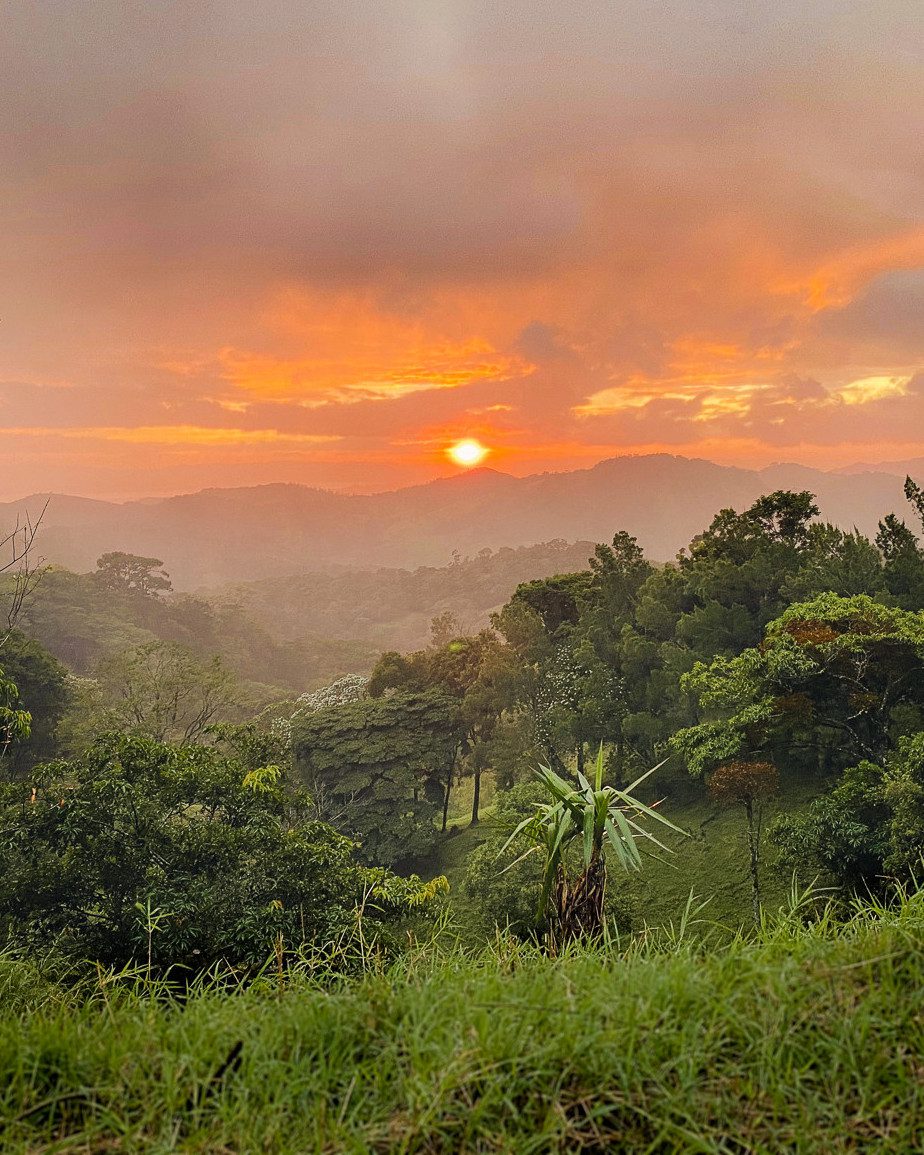
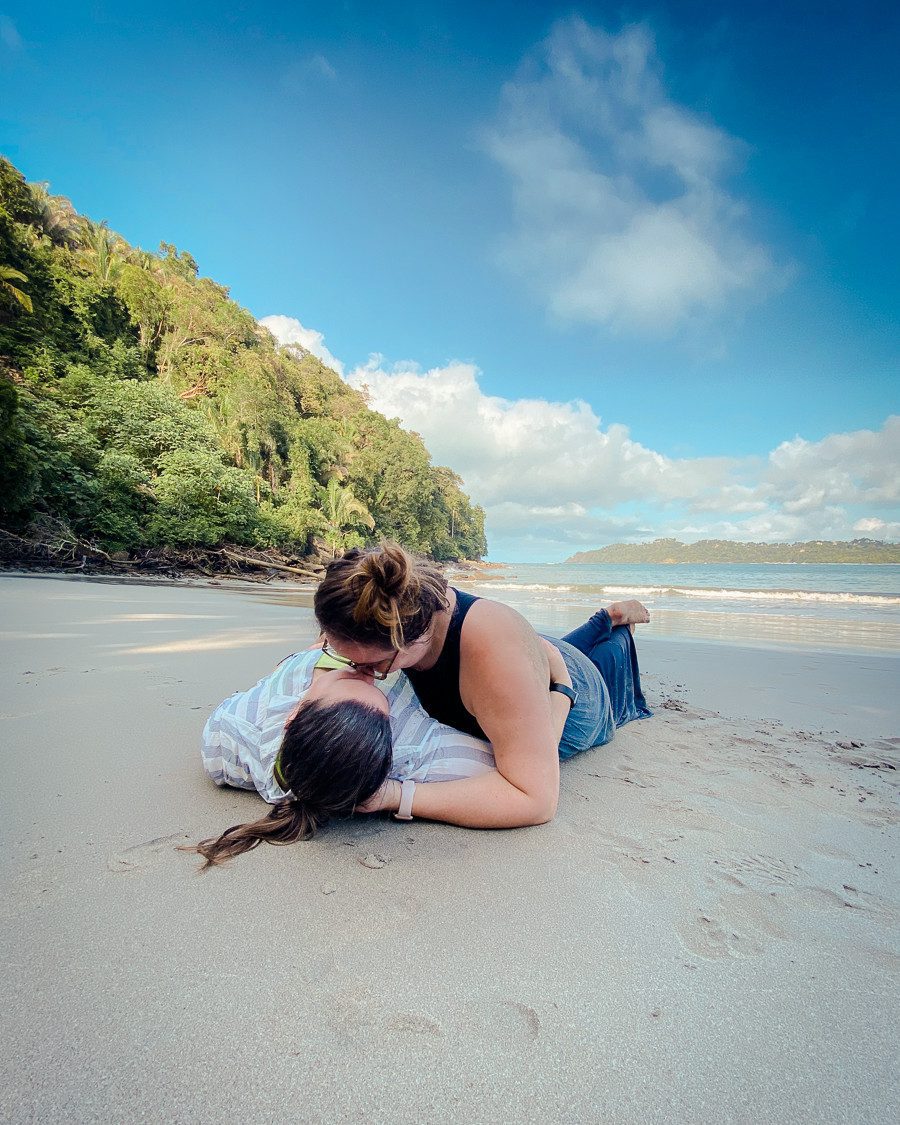
Leave A Comment